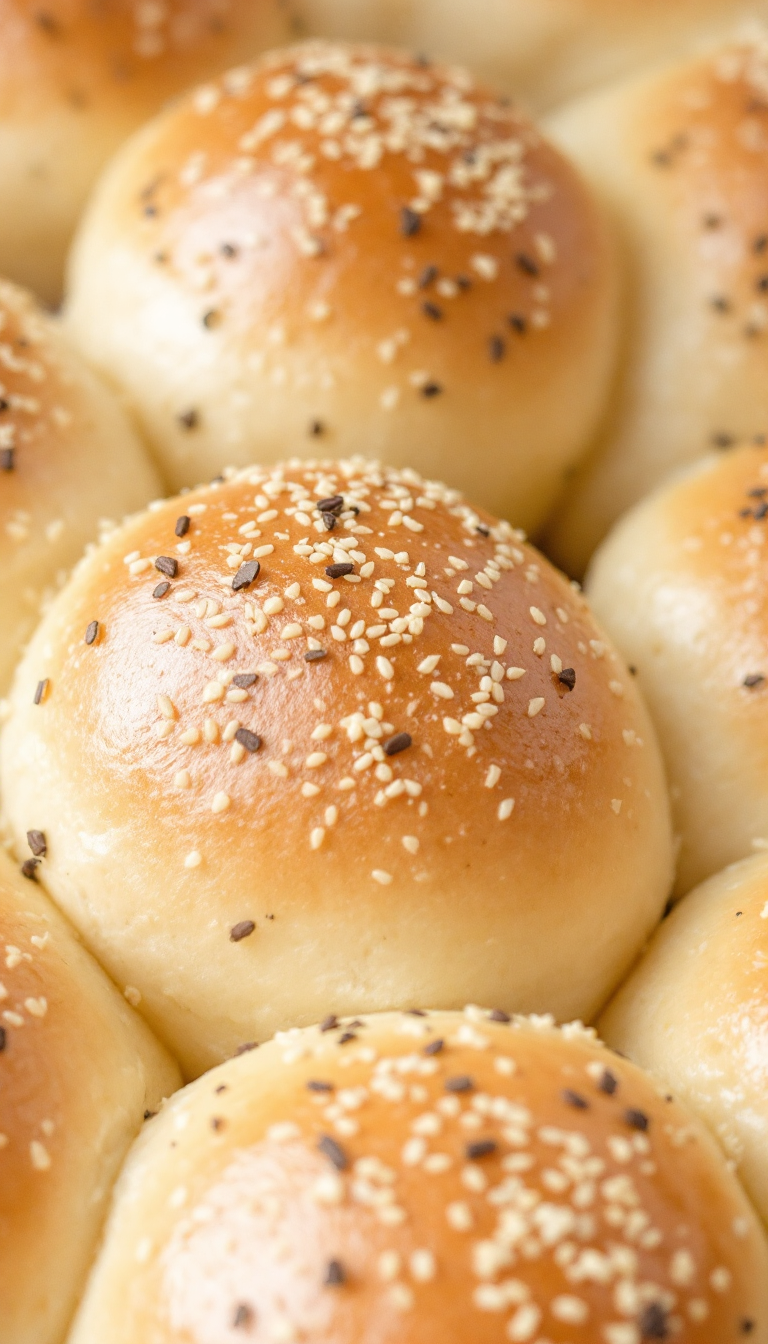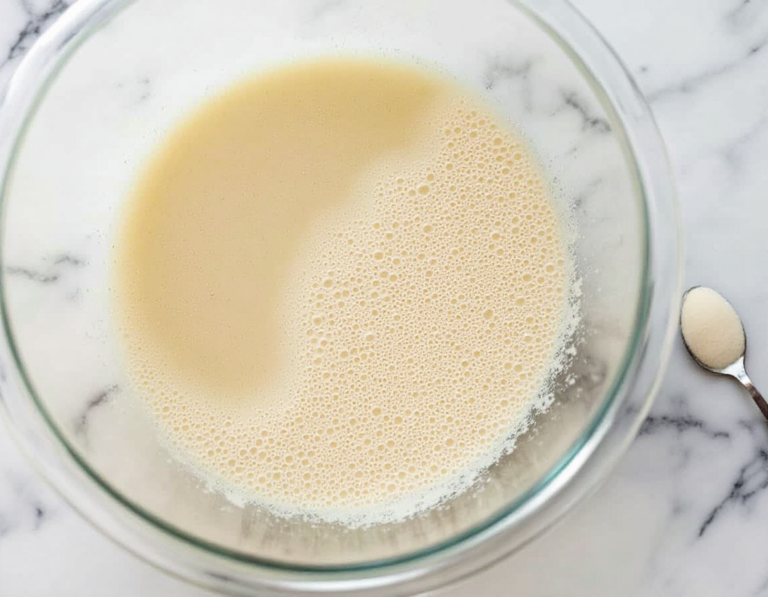If you’re looking for a quick and delicious addition to your meal, these homemade butter buns are the perfect solution. They are fluffy, buttery, and come together in no time. Perfect for any occasion, from a casual dinner to a special gathering, these buns will have everyone reaching for seconds. Get ready to fill your kitchen with the warm, inviting scent of freshly baked bread!
Steps
- Warm the milk in a microwave-safe cup until it begins to boil, approximately one minute. Mix in the butter, 1/4 cup of sugar, and salt, and allow it to cool to below 110 degrees F (45 degrees C).
- In a large bowl, combine the yeast and 1 teaspoon of sugar with warm water. Let this stand for about 10 minutes until the yeast becomes foamy.
- Add the cooled milk mixture to the yeast mixture, along with 2 cups of bread flour and the beaten egg. Mix everything with a wooden spoon until the blend is smooth, then gradually incorporate the remaining flour until the dough is slightly sticky yet smooth.
- Transfer the dough onto a floured surface and knead gently to form a ball. Place this dough ball in a lightly-oiled bowl, turning it to coat, and cover it with a towel. Allow it to rise in a warm environment for about 30 minutes.
- Prepare a baking sheet with parchment paper. Divide the dough into three parts, and then further divide each part into six equal balls. Arrange these on the baking sheet, cover them with a towel, and let them rise for another 30 minutes.
- Heat the oven to 350 degrees F (175 degrees C).
- Bake the rolls in the preheated oven for approximately 15 minutes, or until they achieve a golden brown color.
Ingredients
- ¾ cup of milk
- ¼ cup of butter
- ¼ cup of granulated sugar
- 1 teaspoon of salt
- 4 ½ teaspoons of active dry yeast
- 1 teaspoon of granulated sugar
- ½ cup of warm water (approximately 110 degrees F/45 degrees C)
- 3 ½ cups of bread flour, with more as needed
- 1 egg, lightly beaten
- 1 tablespoon of all-purpose flour, or more as necessary for dusting
Nutritional Values
Calories: 2376 | Total Fat: 54g | Saturated Fat: 36g | Cholesterol: 306mg | Sodium: 2808mg | Total Carbohydrate: 378g | Dietary Fiber: 18g | Total Sugars: 72g | Protein: 72g | Calcium: 342mg | Iron: 18mg | Potassium: 1134mg
FAQ
- Can I use all-purpose flour instead of bread flour?
- Yes, while bread flour is recommended for its higher protein content, which helps achieve a chewier texture, you can use all-purpose flour if needed. The rolls may be a bit less chewy but still delicious.
- How do I know if the milk is at the right temperature after cooling?
- The milk should be cooled to below 110 degrees F (45 degrees C) before combining it with the yeast mixture. If you don’t have a thermometer, ensure it’s warm to the touch but not hot.
- What is the purpose of letting the dough rise twice?
- Allowing the dough to rise twice helps develop the gluten and enhances the texture and flavor of the rolls. The first rise allows the dough to double in size, while the second rise ensures a light and airy texture.
- Can I prepare the dough in advance and bake it later?
- Yes, you can prepare the dough ahead of time. After the first rise, you can cover it tightly and refrigerate it overnight. Bring it to room temperature before proceeding with the second rise and baking.
- How do I store leftover rolls?
- Store any leftover rolls in an airtight container at room temperature for up to 3 days. For longer storage, you can freeze the rolls. To reheat, simply thaw them at room temperature or warm them in the oven.
Tips
- Ensure Milk Temperature is Correct: After scalding the milk and adding butter, sugar, and salt, allow the mixture to cool below 110°F (45°C) before combining it with the yeast mixture. This prevents killing the yeast and ensures proper rising.
- Check Yeast Activity: Confirm that your yeast is active by waiting for it to form a creamy foam after combining with warm water and sugar. This step is crucial for achieving the desired rise in the dough.
- Gradual Flour Addition: Incorporate the bread flour gradually, 1/2 cup at a time, to ensure the dough is smooth and slightly sticky without becoming too dry or dense.
- Proper Rising Environment: Allow the dough to rise in a warm, draft-free area to ensure it doubles in size effectively. If your kitchen is cool, consider placing the dough in an oven with just the light on to create a warm environment.
Equipment
- Glass 2-cup measuring cup (microwave-safe)
- Large mixing bowl
- Wooden spoon
- Baking sheet
- Parchment paper


